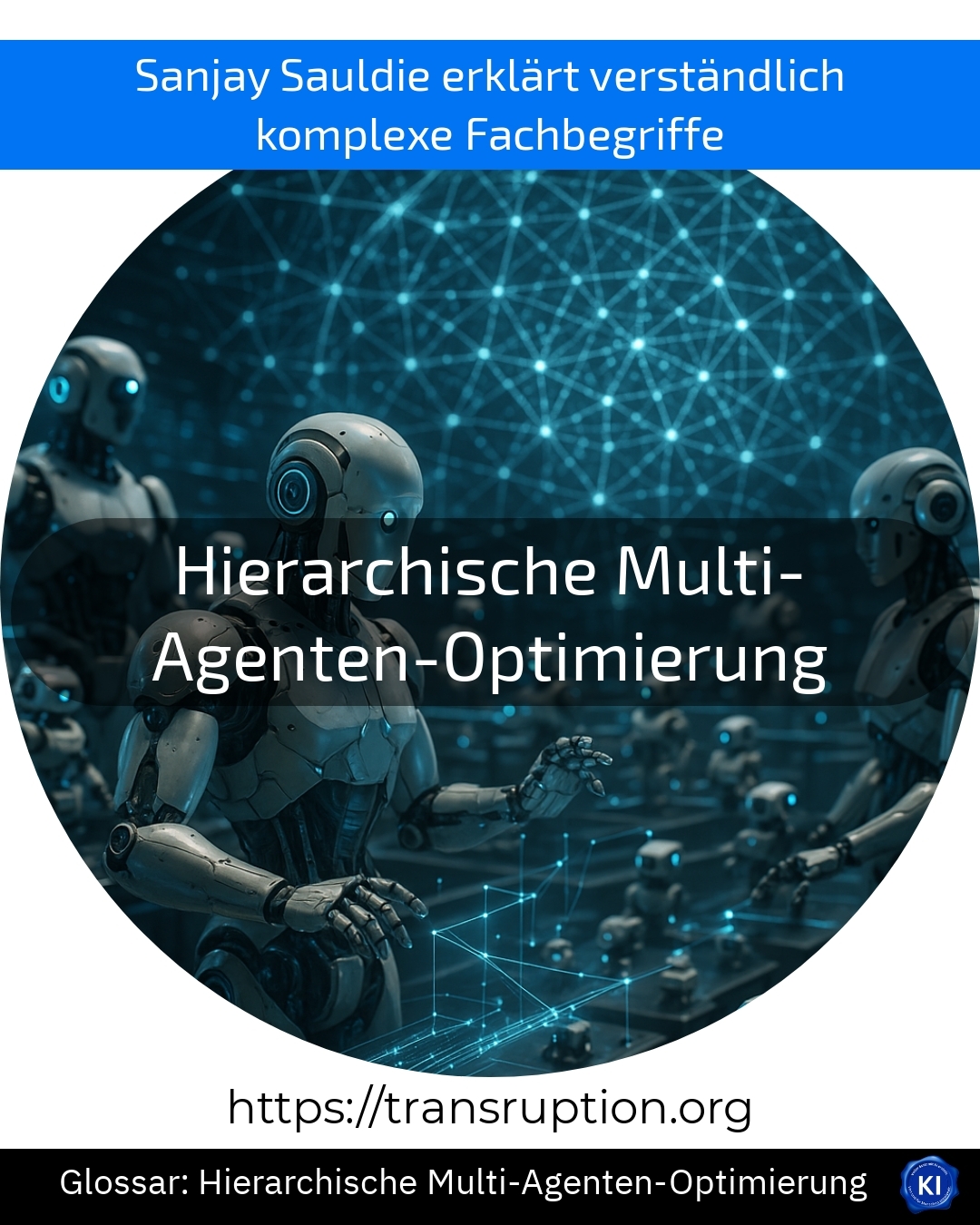Hierarchical multi-agent optimisation is a term used in the fields of artificial intelligence, Industry and Factory 4.0 and automation. It describes a method in which many "agents", i.e. independently operating computer programmes or robots, work together to solve a complex task. The "hierarchical" aspect means that these agents are organised at different levels, similar to a company with managers and employees.
Imagine a modern factory: Various robot arms, conveyor belts and control systems work together to manufacture products. Each individual type of robot optimises its own tasks - for example, the precise cutting of materials. At the same time, there are higher-level systems that monitor whether the entire assembly line is running optimally. The hierarchy ensures that each agent does not just do the best for itself, but keeps an eye on the overall goal.
Hierarchical multi-agent optimisation therefore ensures that all participants work together in a coordinated manner and coordinate with each other. This leads to greater efficiency, lower costs and better utilisation of resources - a decisive advantage for modern companies.















